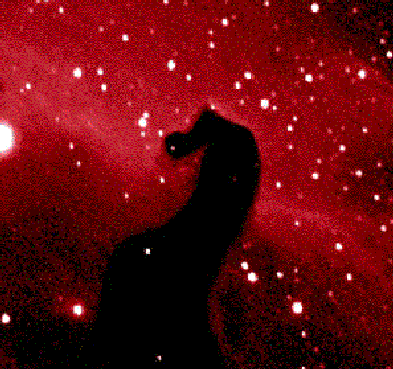Credit & Copyright: Vic Winter and Tom Bisque (ICSTARS)
Explanation:
1500 light years away lies a nebula of quite
peculiar shape. How did the dark dust
cloud shown above
come to be shaped like a horse's head? Nobody knows!
Barnard 33,
as this region is known to some, is surely a dark dust
cloud absorbing the light from the bright red emission nebula
behind it. The Horsehead Nebula
is also thought to be a region where low-mass stars form. But
the reason for gross shapes in the universe is frequently poorly
understood. Perhaps there is no simple explanation in this case.
Some stars are thought to be
efficient creators of dust,
while others are much better at destroying it. The Horsehead
Nebula's dust distribution might just be the result of a specific
irregular distribution of stars and gas in its vicinity.
1999 2000 2001 2002 2003 2004 2005 2006 2007 2008 2009 2010 2011 2012 2013 2014 2015 2016 2017 2018 2019 2020 2021 2022 2023 2024 2025 |
Yanvar' Fevral' Mart Aprel' Mai Iyun' Iyul' Avgust Sentyabr' Oktyabr' Noyabr' Dekabr' |
NASA Web Site Statements, Warnings, and Disclaimers
NASA Official: Jay Norris. Specific rights apply.
A service of: LHEA at NASA / GSFC
& Michigan Tech. U.
|
Publikacii s klyuchevymi slovami:
tumannost' Konskaya Golova - zvezdoobrazovanie - pylevoe oblako - emissionnaya tumannost'
Publikacii so slovami: tumannost' Konskaya Golova - zvezdoobrazovanie - pylevoe oblako - emissionnaya tumannost' | |
Sm. takzhe:
Vse publikacii na tu zhe temu >> | |
